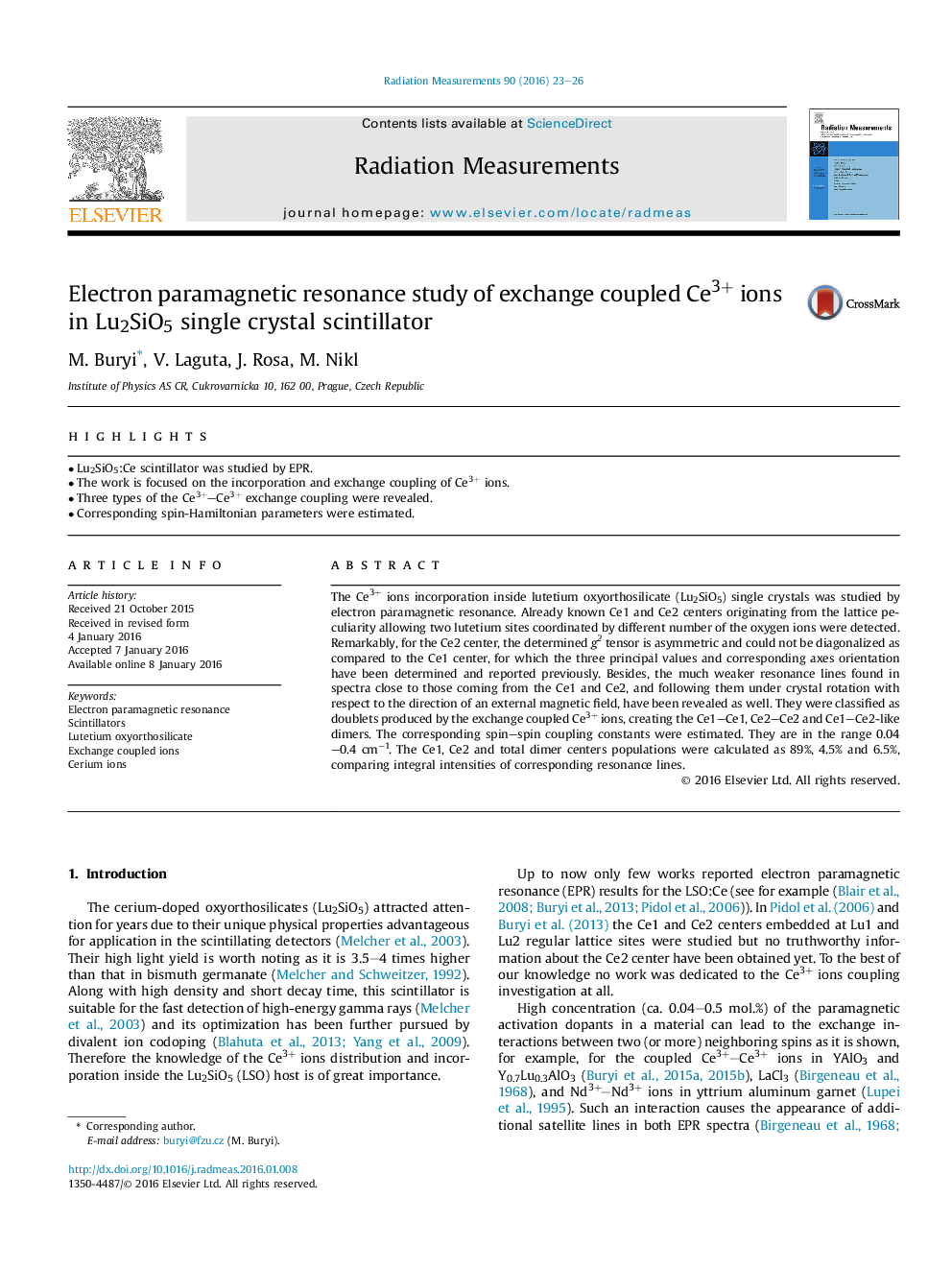| Article ID | Journal | Published Year | Pages | File Type |
|---|---|---|---|---|
| 1888003 | Radiation Measurements | 2016 | 4 Pages |
•Lu2SiO5:Ce scintillator was studied by EPR.•The work is focused on the incorporation and exchange coupling of Ce3+ ions.•Three types of the Ce3+–Ce3+ exchange coupling were revealed.•Corresponding spin-Hamiltonian parameters were estimated.
The Ce3+ ions incorporation inside lutetium oxyorthosilicate (Lu2SiO5) single crystals was studied by electron paramagnetic resonance. Already known Ce1 and Ce2 centers originating from the lattice peculiarity allowing two lutetium sites coordinated by different number of the oxygen ions were detected. Remarkably, for the Ce2 center, the determined g2 tensor is asymmetric and could not be diagonalized as compared to the Ce1 center, for which the three principal values and corresponding axes orientation have been determined and reported previously. Besides, the much weaker resonance lines found in spectra close to those coming from the Ce1 and Ce2, and following them under crystal rotation with respect to the direction of an external magnetic field, have been revealed as well. They were classified as doublets produced by the exchange coupled Ce3+ ions, creating the Ce1–Ce1, Ce2–Ce2 and Ce1–Ce2-like dimers. The corresponding spin–spin coupling constants were estimated. They are in the range 0.04–0.4 cm−1. The Ce1, Ce2 and total dimer centers populations were calculated as 89%, 4.5% and 6.5%, comparing integral intensities of corresponding resonance lines.
